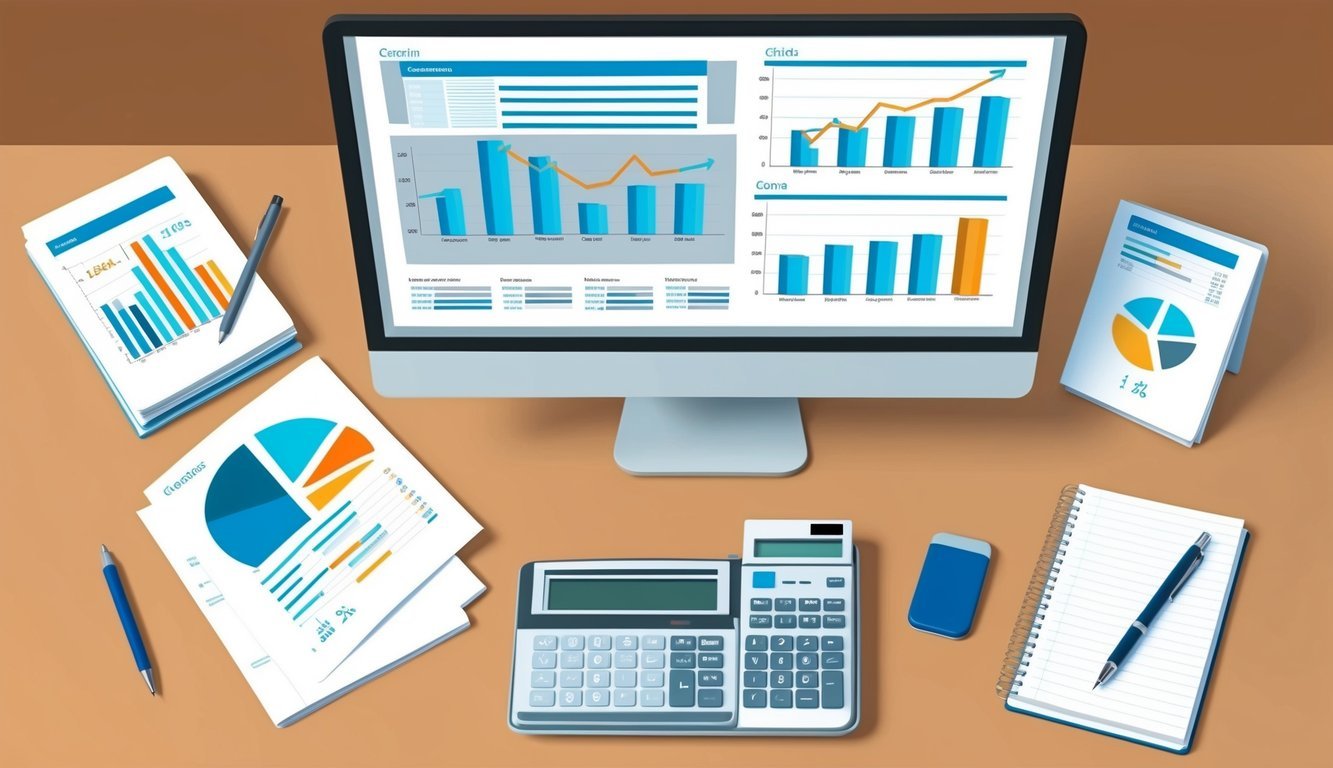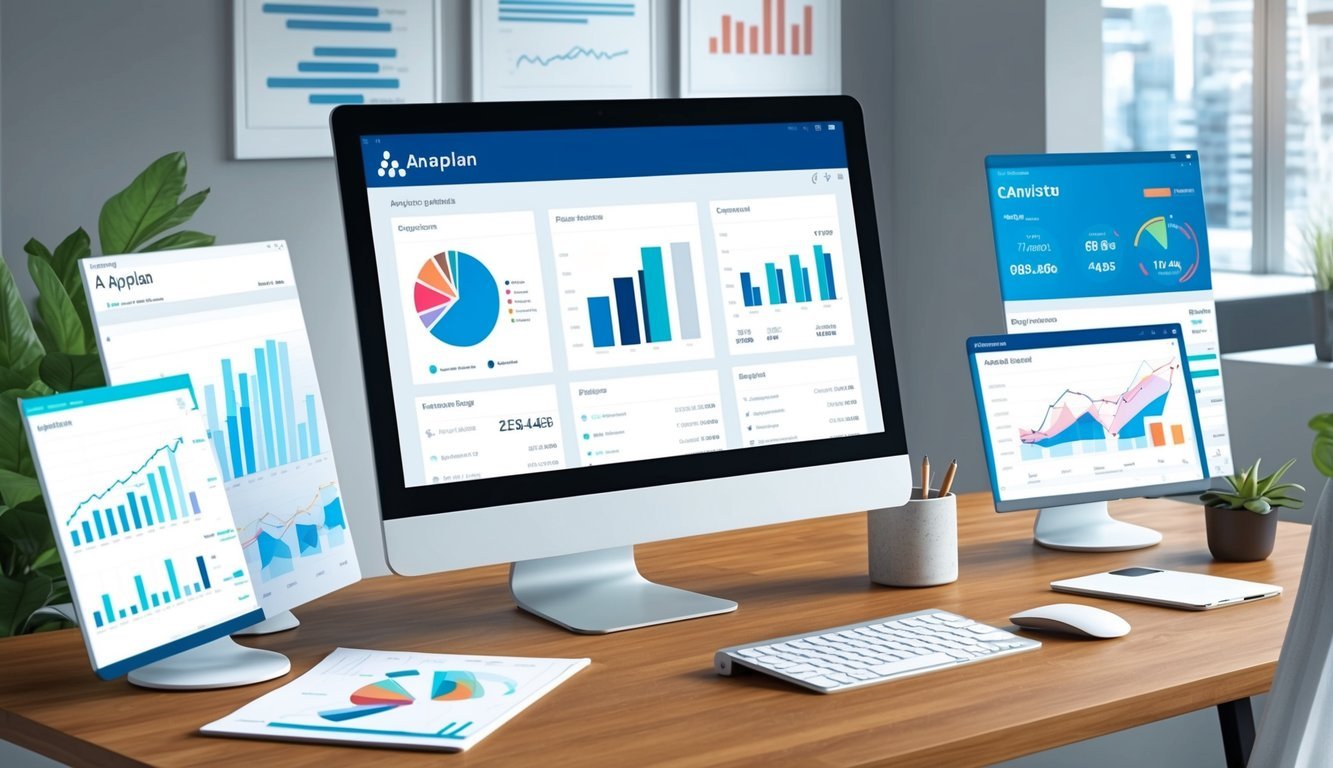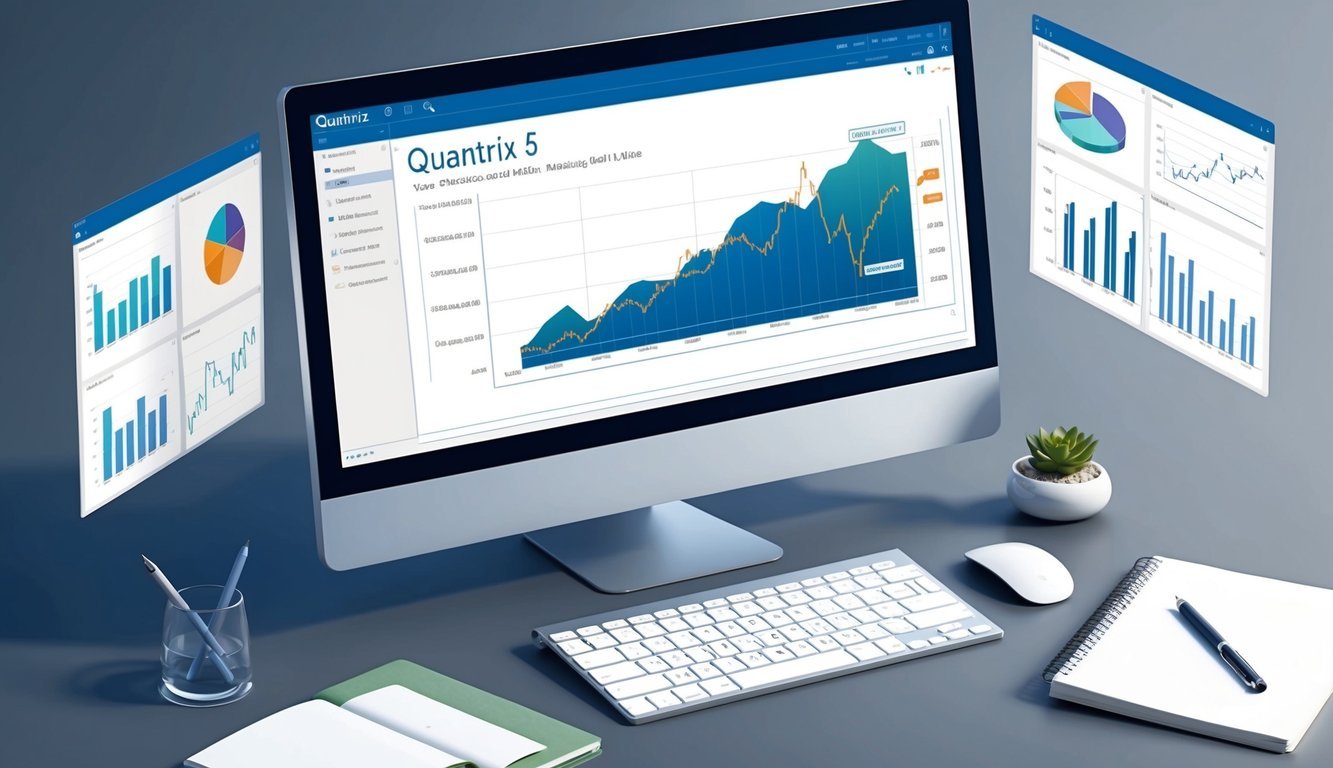Financial modeling is a crucial skill in the business landscape, helping companies navigate their monetary decisions with confidence.
If you’re curious about where to pick up this valuable skill, you’ve come to the right place!

There’s no shortage of options for learning financial modeling.
The best programs mix real-world practice with essential tools like Excel.
Let’s dive into five top-notch courses that can help kick your finance or business career into high gear.
1) Adaptive Insights
Adaptive Insights is a fantastic financial modeling tool that simplifies your life.
It’s cloud-based, which means you can access it from anywhere—great for those of us who like working from the couch once in a while.
This software helps streamline financial processes, letting you make more informed decisions.
Plus, it adapts to market changes faster than you can say “budget cut.”
With features for planning, budgeting, and reporting, it’s ideal for mid-sized businesses looking for something user-friendly.
And guess what? It’s pretty affordable too, so you can boost your financial modeling game without breaking the bank.
One of the coolest perks? It integrates with Salesforce, so connecting your sales data with your financial models is a breeze.
2) Mavenlink
Now known as Kantata after a merger in 2021, Mavenlink is a project management tool that packs a punch when it comes to financial modeling and resource planning.
You’ll love how it helps track project progress and keeps your team in the loop with real-time updates.
The reporting features are particularly handy—customize the interface and keep your projects on track.
Just a heads-up, though: the user interface can feel a bit dated and not the easiest to navigate.
The Gantt charts might give you a headache, and pricing can be quite murky, making it a bit tricky when budgeting.
Still, despite these quirks, Kantata offers robust tools for financial modeling that can guide you in making smarter decisions about your projects.
3) Anaplan

When it comes to financial modeling, Anaplan is a major player worth checking out.
This powerful tool can handle all your company’s planning and forecasting needs.
This cloud-based platform lets you automate processes, improving forecasting performance like you wouldn’t believe.
It’s great for uniting various parts of your business, like finance, sales, and operations.
Bid farewell to endless spreadsheets! Anaplan gives you real-time visibility into your data, making decision-making quicker and easier.
Many large corporations swear by Anaplan for its ability to visualize data and build scenarios, allowing for reliable financial planning.
But, a word of caution—it’s often aimed at larger enterprises, and can be a bit pricey for smaller businesses.
4) Quantrix

Next up is Quantrix, a tool that elevates financial modeling.
It goes beyond the average spreadsheet by using a multi-dimensional approach, allowing you to analyze data from multiple angles.
You’ll appreciate how easy it is to add new categories and expand your models—no more getting bogged down in two-dimensional spreadsheets!
One standout feature? Its natural language formulas.
You can write formulas that are actually readable—game-changing for keeping your models clear and comprehensible.
Plus, it has handy features like always-on pivoting and role-based access, which help keep your entire team on the same page.
If you’re looking to break away from traditional spreadsheets and want something a bit more powerful, Quantrix might just be your new best friend.
5) Cube Software

Let’s talk about Cube Software, a delightful tool that makes financial modeling feel effortless.
It plays nice with Excel and Google Sheets, so you can stick to the formulas you already know.
Cube excels at financial planning and analysis, helping with budgeting, forecasting, and report generation—making these tasks smoother and quicker.
Its automatic syncing of financial data saves you tons of time and cuts down on errors.
Who wants to spend hours copying and pasting numbers, right?
Users rave about Cube being user-friendly and efficient, allowing you to view your data from various perspectives.
Whether you’re tackling simple or complex models, Cube’s got your back!
Understanding Financial Modeling
Financial modeling is key in business decision-making, and it’s all about making informed money choices.
You’ll learn the ins and outs of building models and understand their significance for companies.
Basics of Financial Models
Think of financial models as digital roadmaps for a company’s money flow, combining math with a bit of educated guessing.
You usually start with basic Excel skills to get the ball rolling.
A good model typically has three main components:
- Income statement
- Balance sheet
- Cash flow statement
These elements work together to provide a comprehensive view.
Input items like sales growth and expenses, and watch as the model calculates profits and cash flow!
Models range from simple to incredibly detailed, depending on your needs.
Some popular types include:
- 3-statement models
- Budget models
- Forecasting models
Importance in Business Analysis
Financial models are invaluable for business professionals, allowing smarter monetary decisions.
With a solid model, you can experiment with different scenarios before committing real money.
Here’s why models are awesome:
- They demonstrate potential outcomes.
- They help catch financial trouble before it escalates.
- They simplify future planning.
Thinking about acquiring a new company? A model can help you figure out if it’s a smart move.
Considering launching a new product? Model it first to gauge potential profit.
And let’s not forget investors; they love seeing well-supported numbers.
It shows that you’ve got your act together and understand what you’re doing.
Evaluating Financial Modeling Programs

Choosing the right financial modeling program is essential! You need to keep an eye on key features and what sets each apart.
Criteria for a Valuable Program
When you’re checking out these programs, think about the following:
-
Course content: Look for programs that cover the basics and venture into advanced topics.
-
Hands-on practice: The best courses let you build real models.
-
Teacher quality: Instructors should bring real-world experience to the table.
-
Flexibility: Online courses that fit your schedule are a big plus.
-
Cost: Make sure you’re getting good value for your money.
-
Job market value: Pick a course that employers recognize and respect.
The FMVA certification is popular and many find it beneficial.
It covers essential skills for making smart money decisions.
Differentiating Features
Programs often stand out for various reasons:
-
Specialization: Some focus on specific industries or model types.
-
Tools: Check if they cover popular software like Excel or more advanced tools.
-
Support: Look for programs with strong student support and career guidance.
-
Updates: Good programs stay current with the ever-changing financial landscape.
-
Networking: Certain courses help you connect with others in the industry.
The Business and Financial Modeling Specialization is a solid choice, covering five key areas.
It’s a great way to boost your skillset.
Ultimately, the best program for you will depend on your goals and what you hope to learn.
Frequently Asked Questions

Financial professionals are always on the lookout for the best tools to assist with modeling and number-crunching.
Let’s tackle some common questions about top programs, free options, and ways to enhance your skills.
What are the top finance programs for crunching investment banking numbers?
Adaptive Insights is a favorite for its user-friendly design.
If you’re in need of handling complex models, Anaplan is a go-to.
And for startups, Cube Software offers flexible solutions that won’t make you cringe over costs.
Looking for a no-cost option—what financial modeling software won’t break the bank?
Google Sheets is your free best bet.
You’ll find it has most of the key features you need to get started.
Excel Online is another solid option if you’re already comfortable with Microsoft’s layout.
What tools do startup finance gurus recommend for modeling cash flows?
Mavenlink is great for project-based businesses.
Meanwhile, Quantrix shines with its multi-dimensional modeling.
Both can help you map out your cash flow like a pro.
Which certification should I get to become a modeling pro?
The Financial Modeling & Valuation Analyst (FMVA) certification is super popular.
It covers a broad range of topics and looks impressive on your resume.
Which institutions can turn me into a financial modeling wizard?
Corporate Finance Institute offers stellar courses, while Wall Street Prep is well-known for its rigorous training.
Both are fantastic options for leveling up your modeling skills, and their programs are respected in the finance community.
If you’re on the lookout for the best private equity courses, both platforms provide detailed training on valuation, deal structuring, and financial modeling—skills that can give you an edge in the private equity field.
Where can I find financial modeling software to try out for free?
You can play around with Quantrix through their free trial, and Anaplan also has a demo version.
These give you a taste of high-end modeling without spending a dime.

